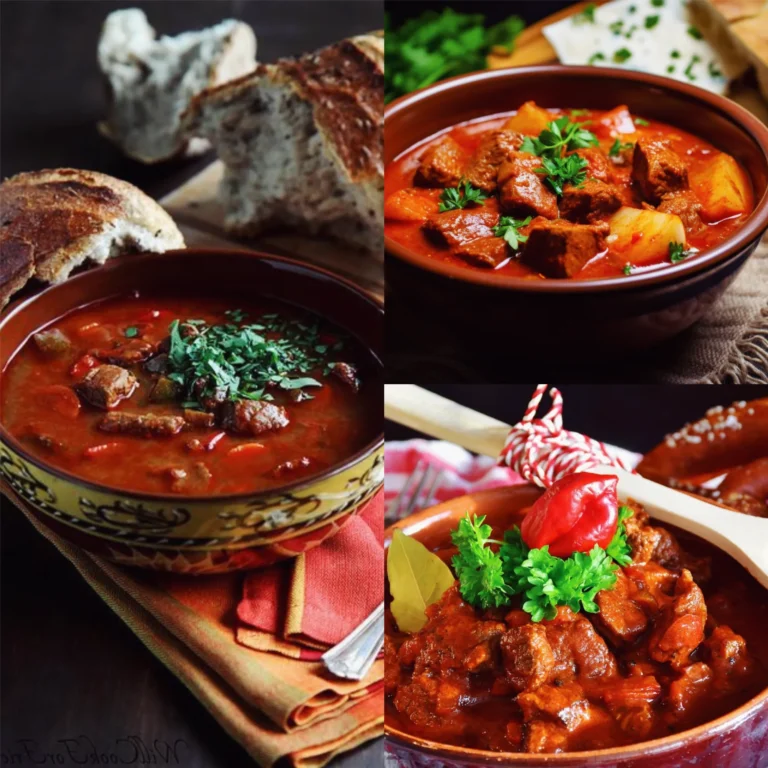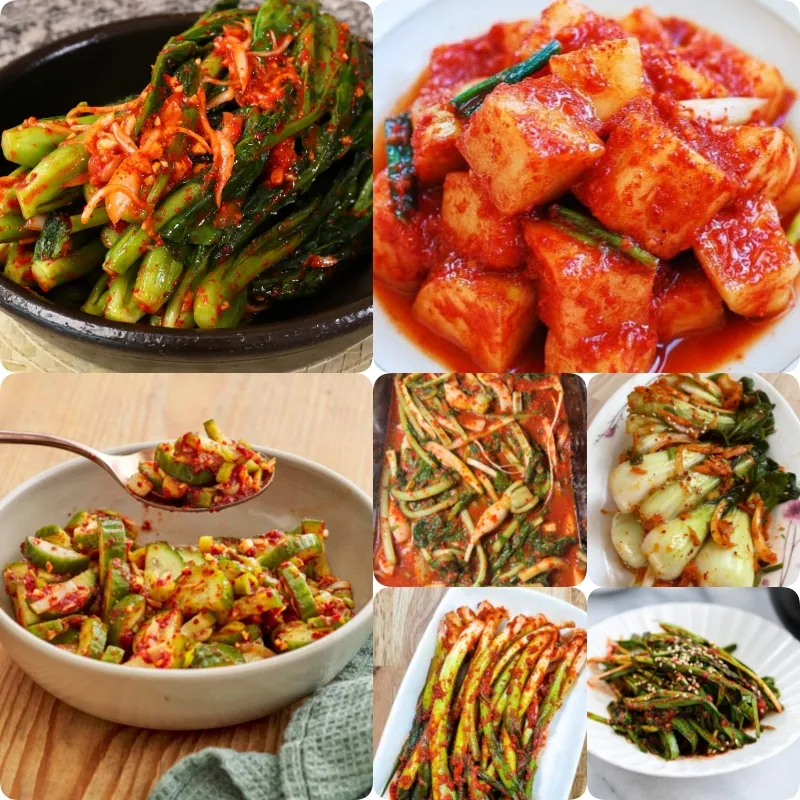
Exploring the Remarkable Diversity of Korean Kimchi
When thinking of kimchi, many people immediately imagine fermented napa cabbage with a red hue, a tangy-spicy taste, and the distinct aroma of garlic and green onions. However, if you delve deeper into kimchi and Korean cuisine, you’ll discover that napa cabbage kimchi is just one of the many types of this iconic dish. In fact, the Kimchi Museum in Seoul has cataloged up to 187 different varieties, each with its own unique flavor and characteristics.
1. Napa Cabbage Kimchi
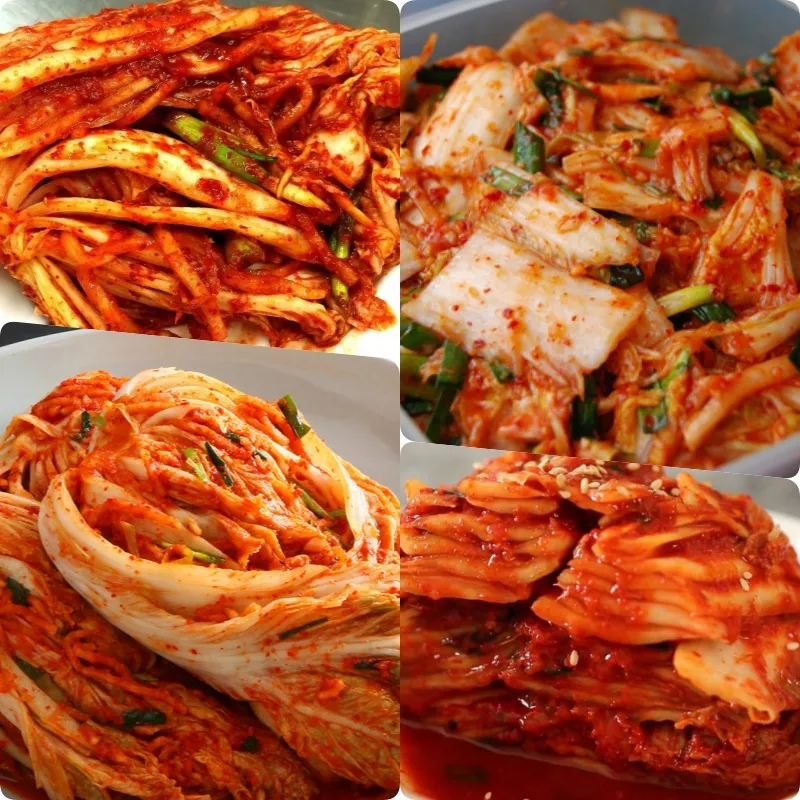
Napa cabbage kimchi, known as Baechu Kimchi in Korean, is perhaps the most famous type of kimchi and is often seen as a symbol of Korean cuisine. This side dish is an essential part of Korean meals, frequently appearing in restaurants and Korean dramas. The traditional method of making Baechu Kimchi involves washing the cabbage, soaking it in saltwater, and then spreading a mixture of spices—such as red pepper powder, green onions, carrots, and garlic—onto each leaf before storing it in a jar to ferment. This type of kimchi is typically prepared during the winter months, and in Korea, large jars of kimchi can often be seen in or near people’s homes.
2. Radish Kimchi
Radish kimchi is another popular type of kimchi, with several variations, the most famous being Yeolmu Kimchi and Kkakdugi Kimchi.
Yeolmu Kimchi is made from young radishes, including both the roots and leaves. The roots of young radishes are tender and easy to prepare. Yeolmu Kimchi is known for its mild, sweet flavor and is most delicious during the spring and summer months. It’s often enjoyed with mixed rice, cold noodles, or cold noodle soup.
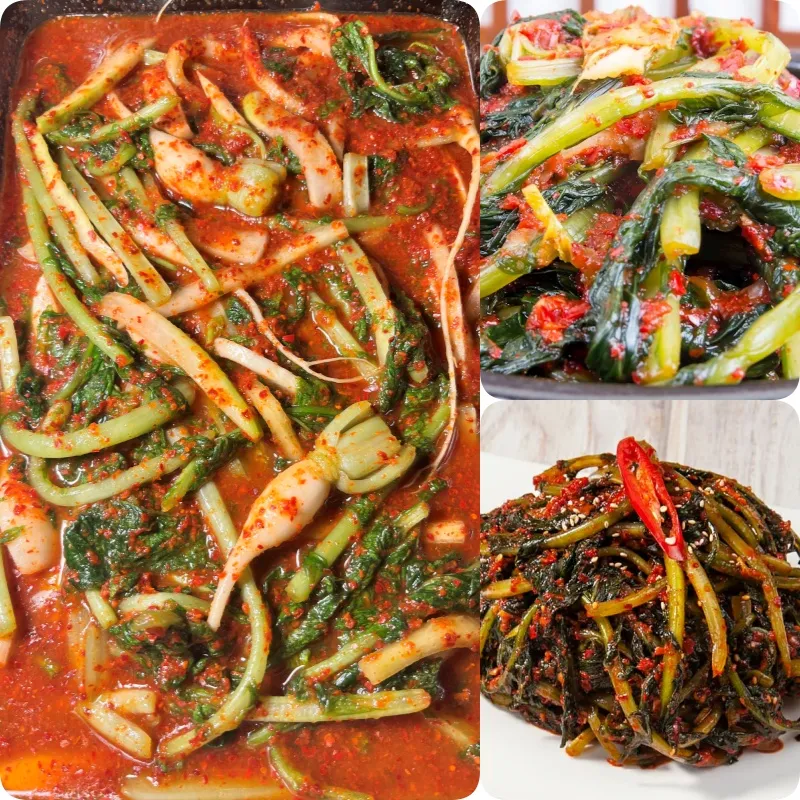
Kkakdugi Kimchi is made from mature radishes, which are cut into bite-sized cubes. This type of kimchi is said to taste best in late autumn, during the radish harvest season in Korea.
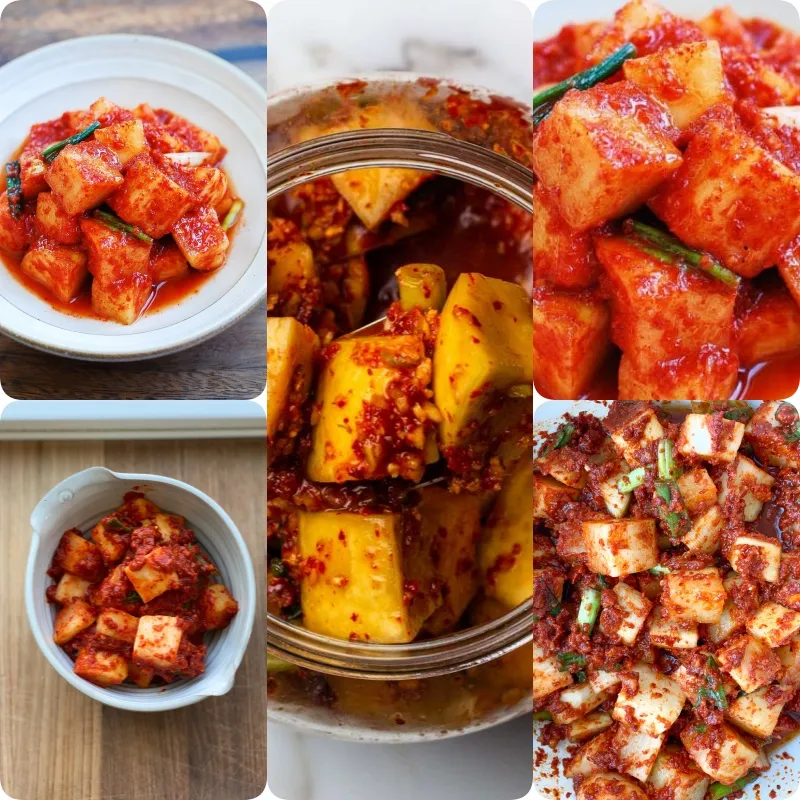
3. Cucumber Kimchi

Oi Sobagi Kimchi, or cucumber kimchi, is made from Korean Kirby cucumbers, which are small and dense. The cucumbers are slit lengthwise, leaving about 2 cm of the stem intact so that the pieces remain attached. After being salted and washed, the cucumbers are mixed with the usual kimchi ingredients. Oi Sobagi Kimchi has a refreshing, crisp taste, making it a perfect accompaniment to dishes like black bean noodles and Korean beef soup.
4. Green Onion Kimchi

Pa Kimchi, or green onion kimchi, is typically made in the spring when green onions are at their freshest. The onions are not salted beforehand but are directly mixed with kimchi spices, along with a bit of sesame seeds and sesame oil. Pa Kimchi is often eaten with rice or instant noodles.
5. Chive Kimchi
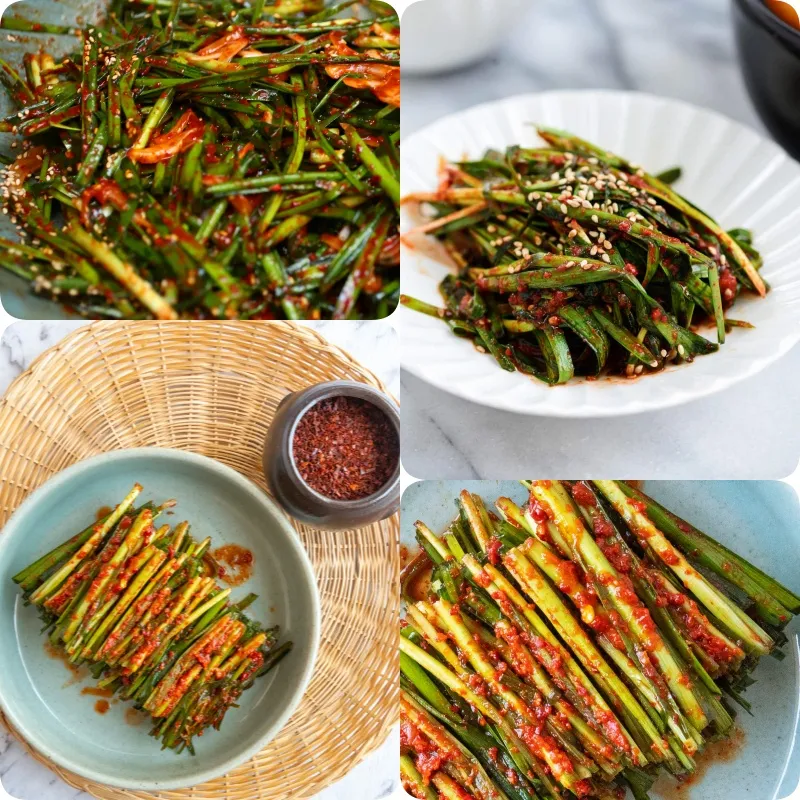
Buchu Kimchi, or chive kimchi, is a popular summer dish in Korea. Chives are briefly marinated in anchovy sauce, then mixed with red pepper powder, sugar, ginger, garlic, and salt. Unlike some other types of kimchi, Buchu Kimchi has a light, fragrant flavor that is easy to enjoy.
6. Bok Choy Kimchi
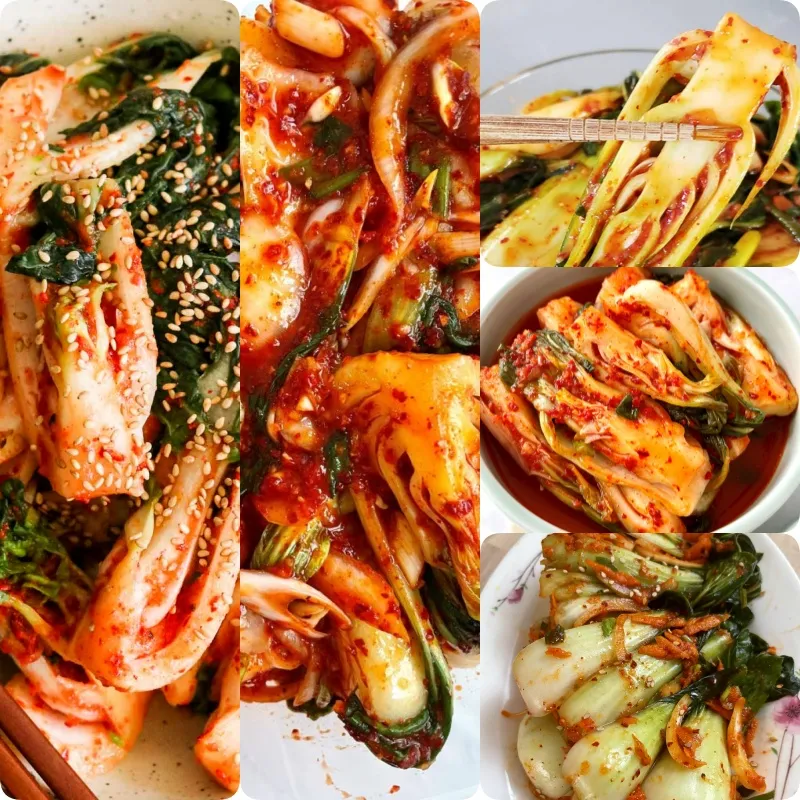
Bokchoy Kimchi, or kimchi made from bok choy, is similar in preparation to napa cabbage kimchi. However, unlike Baechu Kimchi, which is usually fermented for one to two days, Bokchoy Kimchi is typically eaten immediately after mixing, much like a side salad. This type of kimchi is often prepared in late autumn when the weather in Korea becomes colder, and the napa cabbages lose their sweetness.
7. Mustard Leaf Kimchi
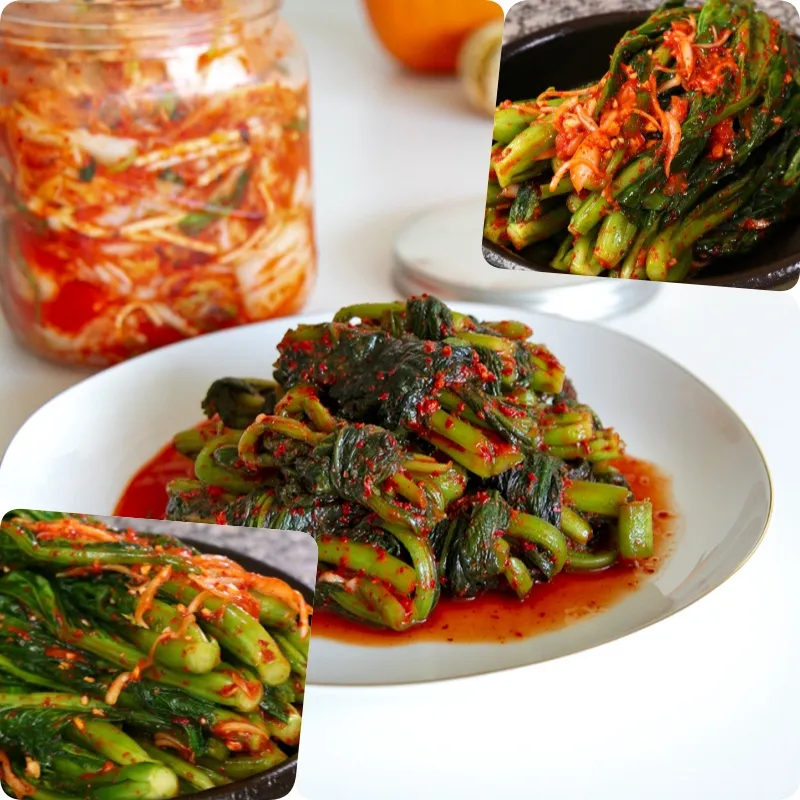
Gat Kimchi, or mustard leaf kimchi, originates from the Jeolla province in southern Korea. This is one of the most unique and flavorful types of kimchi, made from mustard greens. The leaves have a pungent aroma and a slightly spicy taste that stimulates the palate. Due to its warming properties, Gat Kimchi is a popular side dish in the winter or when enjoying fresh seafood.
The diversity of kimchi not only reflects the creativity in Korean cuisine but also embodies the customs, climate, and local specialties of different regions. Each type of kimchi tells its own story, contributing to the rich and captivating landscape of Korean culinary culture.
